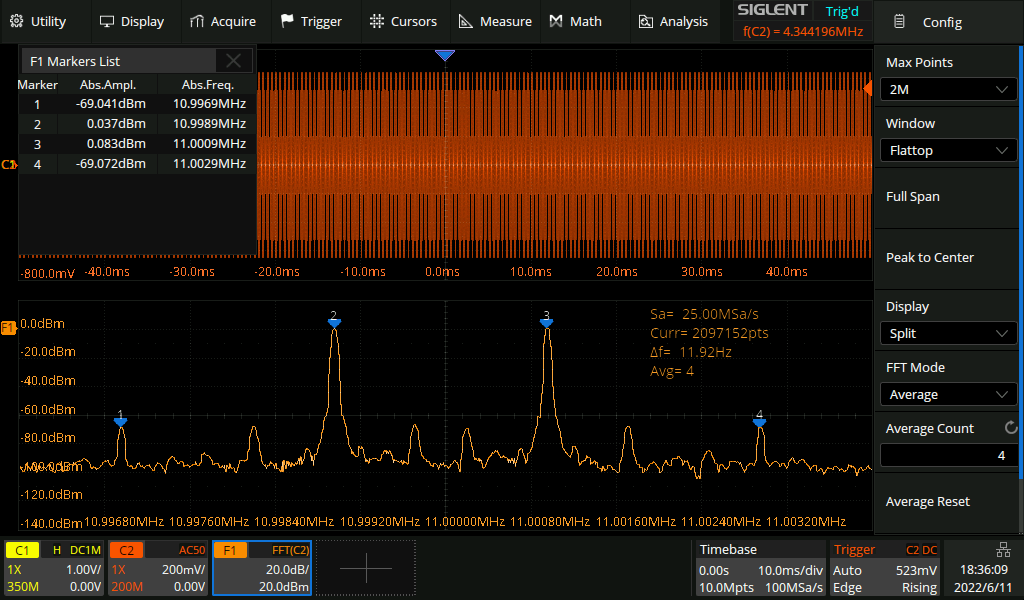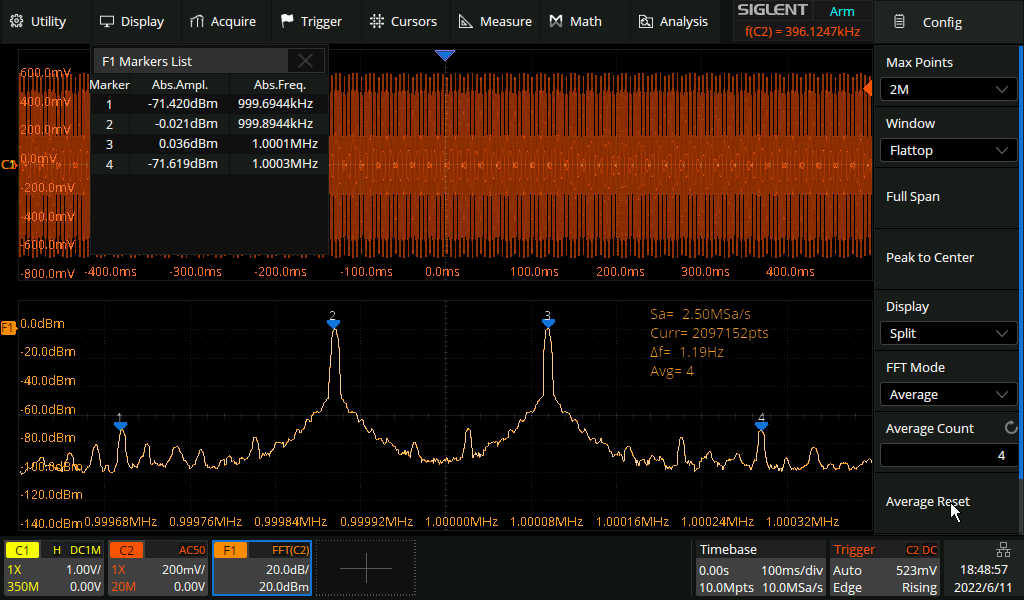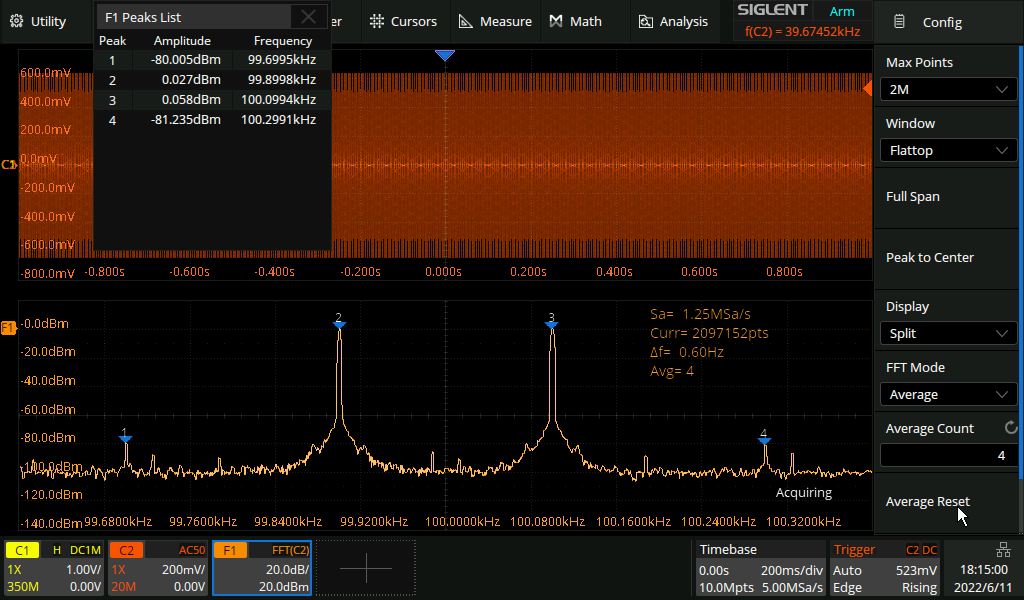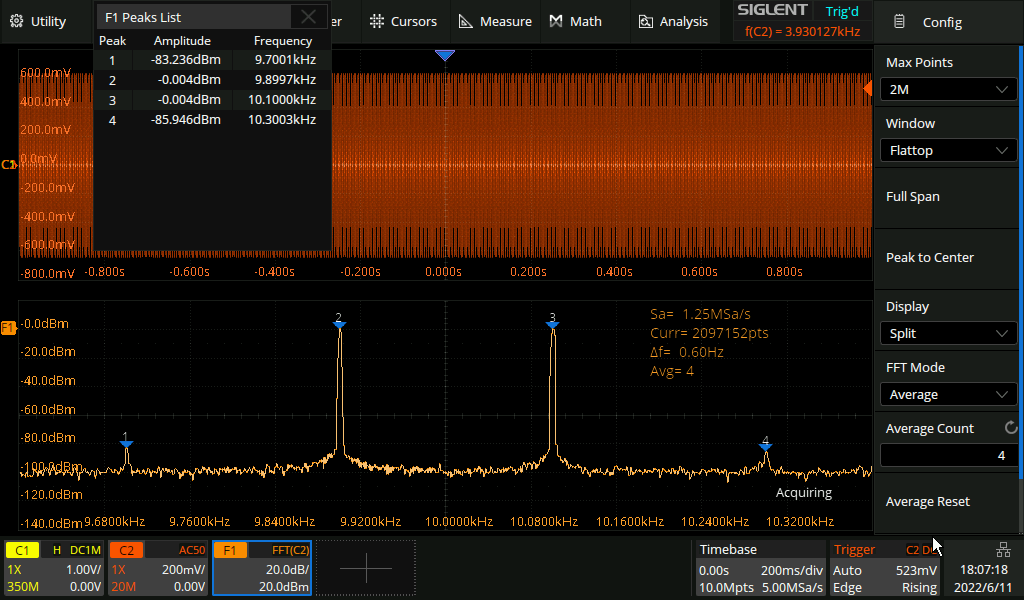Dual tone tests are made using SDG1032X for generate two signals. Ch1is f1 and Ch2 is f2
After then come resistive 50ohm splitter and then this combination go to SDS2504X HD Channel 2.
Note that different frequency pairs may have different FFT samplerate so also different resolution.
In all measurements FFT in average mode n=4
1), and for better level accuracy of course only right FFT window what is FlatTop.
Signal level after splitter is around 0dBm and naturally SDG output levels to splitter are 6dBm.
Because dual tone signals quality is partially unknown result is some amount questinable. The result is indicative.
1) (Sadly)This is not same as pure unweighted last n average (which one I like much more for this kind of technical purpose).
Signal f1 10999kHz and f2 11001kHz (2kHz gap.)
2*f1-f2 = 10997kHz, marker 1 ~ -69dBc
2*f2-f1 = 11003kHz, marker 4 ~ -69dBc

Signal f1 999.9kHz and f2 1000.1kHz (200Hz gap.)
2*f1-f2 = 999.7kHz, marker 1 ~ -71dBc
2*f2-f1 = 1000.3kHz, marker 4 ~ -71dBc

Signal f1 99.9kHz and f2 100.1kHz (200Hz gap.)
2*f1-f2 = 99.7kHz, marker 1, ~ -80dBc
2*f2-f1 = 100.3kHz, marker 4, ~ -81dBc

Signal f1 9.9kHz and f2 10.1kHz (200Hz gap.)
2*f1-f2 = 9.7kHz, marker 1, ~ -83dBc
2*f2-f1 = 10.3kHz, marker 4, ~ -85dBc
Well, imho, not bad ... and it's
maybe even better, but as stated above, the test signals are as they are, in partially of unknown quality in relation to the requirements of just such a test. But perhaps result tells more better than if there is not any kind of result at all displayed.